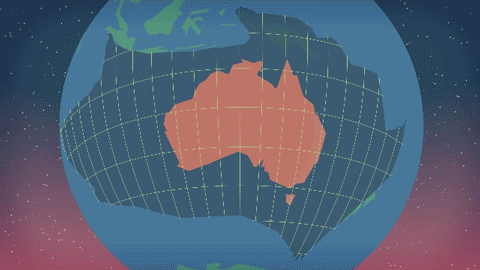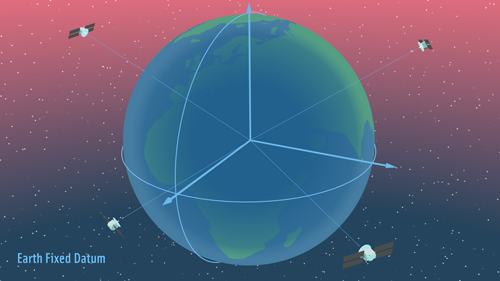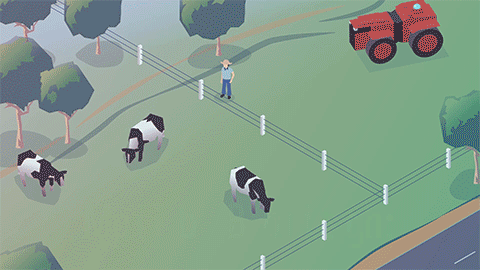Changes are being made to the system that underlies Australia’s location information. The changes will bring Australia’s national latitude and longitude coordinates into line with global satellite positioning systems, enabling smartphones and other positioning technologies to accurately locate features marked on our maps.
Video courtesy Small Island Studio
Australia’s coordinate system moves along with the continent
The changes are needed because national and global location information systems operate differently, and they are diverging. Australia’s national grid of latitude and longitude coordinates moves with the drift of the continent, like a giant net tied to known reference points on the landscape. Together, these reference points and latitude and longitude coordinates are known as a geodetic datum. Every country has its own datum, and the official Australian geodetic datum since 2000 has been the Geocentric Datum of Australia 1994, or GDA94. The coordinates of features on our maps, such as roads, buildings and property boundaries, are all based on GDA94, and they do not change over time

In the eyes of satellite positioning systems, location coordinates are fluid
In contrast, satellite positioning systems base their coordinates on a framework that is fixed to the centre of the Earth. So in their eyes, the coordinates for features on moving parts of the Earth’s surface, such as Australia, are always changing, like slow-moving ships at sea.

Discrepancies between the two systems will soon become more obvious
Historically, location differences of a metre or so have not been an issue, because positioning systems have been broad-brush to say the least. When GDA94 was adopted in 2000, GPS locations were ‘accurate’ to 100 metres. Since then, however, two important things have happened. Australia has moved about 1.5 metres northeast, effectively moving the location of mapped features and their associated GDA94 coordinates. At the same time, positioning technology has evolved considerably. By 2020, Australia will have moved 1.8 metres north-east of where it was in 1994, and many of us will own devices that pinpoint places as small as, well, a smartphone. With real-time access to precise satellite positioning at our fingertips, we’ll notice discrepancies with GDA94-mapped features. The upshot is that Australia’s datum needs updating so we can reap the benefits of 21st Century positioning technology.
We’re moving Australia’s coordinates into line with global systems
To allow for the complexity of the change, Australia is modernising the datum in two stages. Stage 1 involved defining a new datum 1.8 metres to the north-east of GDA94. GDA2020 was officially defined as Australia’s new geodetic datum in December 2017. This new continent-fixed datum will bring the coordinates of Australia’s mapped features back into line with global systems in 2020 .

Who is implementing the change?
The Intergovernmental Committee on Surveying and Mapping (ICSM) has formed a group to oversee the modernisation of Australia’s datum. The GDA Modernisation Implementation Working Group is helping users and government agencies to build transitional tools and technical resources, and providing information for software developers, equipment providers and users of spatial information.
How do the changes affect you?
The key thing to remember is that, in order to be reliable, location information must be identified by the datum as well as the coordinates. People who work with accurate spatial information and rely on location positioning technologies will need to keep up to date with the important changes being made to Australia’s datum. For others, the datum shift will be largely invisible, apart from improvements to the location services provided by smartphones.
For more information refer to FAQs on Australia’s datum modernisation.

